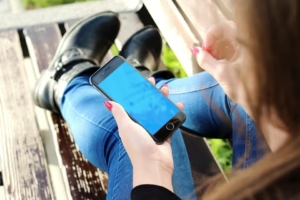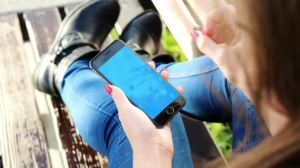From Boxy to Bezel-less: The iPhone’s Visual Transformation
The iPhone. A name synonymous with innovation, disruption, and perhaps most powerfully, design. From its unassuming debut in 2007 to its current, sleek form, the iPhone’s aesthetic evolution has been a captivating journey. It’s a story of relentless refinement, driven by technological advancements, shifting consumer preferences, and the ever-present pursuit of the perfect balance between form and function. This article will explore the iPhone’s visual transformation, examining the key design choices that shaped its identity and the underlying influences that propelled its evolution, moving from the relatively boxy origins to the almost entirely bezel-less future we now inhabit.
I. The Genesis: A Boxy Beginning (2007-2010)
The original iPhone, unveiled by Steve Jobs in January 2007, was revolutionary for its time. However, from a purely aesthetic perspective, it possessed a certain simplicity that, in retrospect, appears almost rudimentary. Its design, characterized by a prominent physical home button, a relatively thick bezel surrounding the 3.5-inch display, and a mostly aluminum back, was functional but lacked the visual flair that would define later iterations.
-
The iPhone (2007): The original model was a clear departure from the physical keyboard-dominated smartphones of the era. [1] The large screen, while small by modern standards, was a key selling point. The silver aluminum back, with a black plastic strip at the bottom for antenna performance, provided a solid and premium feel. The physical home button served as the primary means of navigation, a reliable if somewhat limiting interface.
-
The iPhone 3G (2008): While internally improved with 3G connectivity, the iPhone 3G saw a significant shift in its external design. The aluminum back was replaced with a curved plastic back, available in black or white. This change was primarily driven by the need for improved antenna performance, as plastic is more permeable to radio waves than aluminum. The curved design also made the phone more comfortable to hold. However, the plastic back, while practical, was arguably less premium than the original’s aluminum casing. [2]
-
The iPhone 3GS (2009): The 3GS largely maintained the design language of the 3G, focusing on internal improvements like a faster processor and improved camera. The external differences were minimal, primarily involving subtle variations in the color and finish of the plastic back. [3] This marked a period of design consolidation, emphasizing performance upgrades over radical visual changes.
-
The iPhone 4 (2010): Arguably the most significant design shift of this era, the iPhone 4 introduced a new, angular aesthetic characterized by a stainless steel band sandwiched between two panes of glass. [4] This design, often described as “boxy,” felt significantly more premium and sophisticated than its predecessors. The flat surfaces and sharp lines provided a stark contrast to the curved forms of the 3G and 3GS. The iPhone 4 also featured a higher resolution “Retina Display,” a significant improvement in screen clarity and sharpness, contributing to a more visually pleasing experience. This design, while controversial due to early antenna issues, set a new standard for smartphone aesthetics and influenced competitors for years to come.
Influences and Considerations:
Several factors influenced the design of the original iPhone and its early iterations:
-
Technological Limitations: Battery technology was less advanced, requiring a thicker design to accommodate a sufficient battery life. Similarly, display technology was still evolving, limiting the ability to create truly bezel-less designs.
-
Manufacturing Constraints: Manufacturing processes were not as sophisticated as they are today, making it difficult to produce complex shapes and intricate details.
-
Material Science: The availability and cost of certain materials, such as advanced alloys and durable glass, played a role in design choices.
-
Antenna Performance: As seen with the shift to a plastic back on the iPhone 3G, antenna performance was a critical consideration, dictating material choices and impacting the overall design.
-
Steve Jobs’ Vision: Steve Jobs’s renowned attention to detail and insistence on simplicity played a significant role in shaping the iPhone’s design language. His pursuit of a seamless user experience extended to the physical design of the device, emphasizing ease of use and aesthetic appeal. [5]
The early iPhone designs, while simple by today’s standards, laid the foundation for the future. They established the iPhone as a premium device with a focus on user experience, setting the stage for the more radical design changes to come.
II. Rounding the Edges: The Pursuit of Ergonomics (2011-2013)
Following the angular aesthetic of the iPhone 4, Apple shifted towards a more rounded design language with the iPhone 4S and iPhone 5, prioritizing ergonomics and comfort in hand. This period represents a refinement of the existing design principles, focusing on subtle improvements and enhanced user experience.
-
The iPhone 4S (2011): The iPhone 4S largely retained the design of the iPhone 4, with the same stainless steel band and glass front and back. The most notable external difference was the repositioning of the antenna gaps to address the “Antennagate” controversy that plagued the iPhone 4 launch. [6] Internally, the iPhone 4S received a significant upgrade in processing power and the introduction of Siri, Apple’s voice assistant.
-
The iPhone 5 (2012): The iPhone 5 marked a significant change in the iPhone’s dimensions. It was taller than its predecessor, featuring a 4-inch display with a 16:9 aspect ratio. [7] This increased screen real estate allowed for more content to be displayed without significantly widening the device, improving single-handed usability. The back of the iPhone 5 was made of aluminum, with glass inlays at the top and bottom, creating a more premium and durable finish. The chamfered edges, a subtle design detail, added a touch of elegance and improved the phone’s grip.
-
The iPhone 5C (2013): Introduced alongside the iPhone 5S, the iPhone 5C represented a departure from Apple’s traditional design approach. It featured a polycarbonate (plastic) unibody construction, available in a range of vibrant colors. [8] While the iPhone 5C offered a more affordable entry point into the iPhone ecosystem, it was generally perceived as less premium than the aluminum-clad iPhone 5S. Its rounded edges and glossy finish were a departure from the more angular and matte aesthetics of previous models.
-
The iPhone 5S (2013): The iPhone 5S maintained the design language of the iPhone 5, with subtle refinements to the materials and finish. The most notable addition was the Touch ID fingerprint sensor integrated into the home button. [9] The home button itself was redesigned, eliminating the iconic square icon and featuring a laser-cut sapphire crystal cover for enhanced durability. The iPhone 5S was also available in a new gold color option, signaling a shift towards more luxurious finishes.
Influences and Considerations:
-
Ergonomics: The shift towards rounded edges and a taller, narrower form factor in the iPhone 5 reflected a growing emphasis on ergonomics and single-handed usability. Apple aimed to create a device that was comfortable to hold and easy to operate with one hand.
-
Material Innovation: The use of aluminum and glass in the iPhone 5 and 5S demonstrated Apple’s continued commitment to premium materials and manufacturing techniques. The introduction of the polycarbonate unibody in the iPhone 5C explored alternative material options, albeit with a compromise in perceived premiumness.
-
Feature Integration: The integration of Touch ID into the home button of the iPhone 5S required careful consideration of design and functionality. The sensor had to be seamlessly integrated into the existing design without compromising the user experience.
-
Color and Customization: The introduction of the iPhone 5C with its range of vibrant colors reflected a growing demand for personalization and customization in consumer electronics. Apple recognized the importance of offering consumers choices that reflected their individual style and preferences.
This period marked a transition from the angularity of the iPhone 4 to a more comfortable and ergonomic design language. While the iPhone 5C explored alternative material options, the iPhone 5 and 5S continued to push the boundaries of premium design with refined materials and subtle design details.
III. The Return to Curves: A More Fluid Aesthetic (2014-2016)
With the iPhone 6 and 6 Plus, Apple embraced a more rounded and fluid design language, prioritizing a seamless and integrated aesthetic. This generation marked a significant increase in screen size, requiring a corresponding shift in design to maintain usability and comfort.
-
The iPhone 6 (2014): The iPhone 6 featured a larger 4.7-inch display and a significantly more rounded design than its predecessors. [10] The aluminum unibody construction was smooth and seamless, with rounded edges that blended seamlessly into the curved glass front. The antenna bands, while necessary for connectivity, were a controversial design element, as they disrupted the otherwise clean lines of the device.
-
The iPhone 6 Plus (2014): The iPhone 6 Plus featured an even larger 5.5-inch display, making it Apple’s first foray into the “phablet” market. [11] Its design mirrored that of the iPhone 6, with the same rounded edges and aluminum unibody construction. However, due to its larger size, the iPhone 6 Plus required a different approach to usability, with features like Reachability (double-tapping the home button to bring the top of the screen down) designed to facilitate single-handed operation.
-
The iPhone 6S (2015): The iPhone 6S maintained the design language of the iPhone 6, with subtle improvements to the materials and construction. The use of 7000 series aluminum, a stronger and more durable alloy, addressed concerns about the “Bendgate” controversy that plagued the iPhone 6 launch. [12] The iPhone 6S also introduced 3D Touch, a pressure-sensitive display technology that allowed for new interactions and shortcuts.
-
The iPhone 6S Plus (2015): The iPhone 6S Plus mirrored the design and features of the iPhone 6S, with the same improvements to materials and the addition of 3D Touch. Its larger display and enhanced camera capabilities made it a popular choice for users who prioritized multimedia consumption and creation.
-
The iPhone SE (2016): In contrast to the larger iPhone 6 and 6S models, the iPhone SE was a compact device that revived the design of the iPhone 5S. [13] It featured the same 4-inch display and angular design, but with updated internal components. The iPhone SE was targeted at users who preferred a smaller and more affordable iPhone.
Influences and Considerations:
-
Screen Size: The increasing demand for larger screens was a major driving force behind the design of the iPhone 6 and 6 Plus. Apple had to balance the desire for more screen real estate with the need to maintain usability and comfort.
-
Ergonomics: The rounded edges and smooth surfaces of the iPhone 6 and 6 Plus were designed to make the devices more comfortable to hold and use for extended periods. Apple aimed to create a seamless and intuitive user experience, both visually and tactilely.
-
Material Science: The use of 7000 series aluminum in the iPhone 6S addressed concerns about durability and bending. Apple continued to invest in advanced materials to improve the structural integrity and overall quality of its devices.
-
Feature Integration: The integration of 3D Touch into the iPhone 6S required careful consideration of the display technology and user interface. Apple had to develop new ways for users to interact with their devices and access information.
-
Market Segmentation: The introduction of the iPhone SE demonstrated Apple’s willingness to cater to different market segments and user preferences. The iPhone SE offered a more affordable and compact option for users who preferred a smaller device.
This era marked a shift towards larger screens and a more rounded design language. The iPhone 6 and 6 Plus were a response to the growing demand for larger displays, while the iPhone SE catered to users who preferred a smaller and more affordable device.
IV. Polished Refinement: The Pursuit of Perfection (2017-2020)
The iPhone 7, 8, and X series represent a period of refined design, focusing on subtle improvements to materials, finishes, and feature integration. These models saw the introduction of new color options, improved water resistance, and the gradual elimination of the home button.
-
The iPhone 7 (2016): The iPhone 7 maintained the rounded design language of the iPhone 6 and 6S, with subtle refinements to the antenna bands and camera bump. [14] It introduced new color options, including Jet Black (a high-gloss black finish) and Matte Black. The iPhone 7 also featured improved water resistance and the removal of the headphone jack, a controversial decision that sparked debate among users. The home button was replaced with a solid-state button that used haptic feedback to simulate a click.
-
The iPhone 7 Plus (2016): The iPhone 7 Plus mirrored the design and features of the iPhone 7, with the addition of a dual-lens camera system that offered improved zoom capabilities and portrait mode.
-
The iPhone 8 (2017): The iPhone 8 and 8 Plus featured a glass back, enabling wireless charging. [15] The aluminum frame was retained, but the overall design was slightly thicker and heavier than its predecessors. The glass back also allowed for new color options, including a gold finish with a rose gold hue.
-
The iPhone 8 Plus (2017): The iPhone 8 Plus mirrored the design and features of the iPhone 8, with the addition of a dual-lens camera system.
-
The iPhone X (2017): The iPhone X marked a radical departure from previous iPhone designs. It featured an edge-to-edge OLED display with a “notch” at the top for the front-facing camera and sensors. [16] The home button was eliminated entirely, replaced with gesture-based navigation. The iPhone X also introduced Face ID, a facial recognition system that replaced Touch ID for authentication. The stainless steel frame and glass back provided a premium and durable feel.
Influences and Considerations:
-
Wireless Charging: The introduction of wireless charging in the iPhone 8 and 8 Plus required a shift to a glass back, as aluminum is not compatible with inductive charging technology.
-
Feature Integration: The elimination of the headphone jack in the iPhone 7 was a controversial decision that reflected Apple’s push towards wireless audio and a more streamlined design.
-
Display Technology: The adoption of OLED display technology in the iPhone X allowed for deeper blacks, richer colors, and improved energy efficiency. The edge-to-edge design maximized screen real estate and created a more immersive viewing experience.
-
Biometric Authentication: The introduction of Face ID in the iPhone X represented a significant advancement in biometric authentication technology. Apple aimed to create a more secure and convenient way for users to unlock their devices.
-
Gesture-Based Navigation: The elimination of the home button in the iPhone X required a new approach to navigation. Apple developed a gesture-based system that was intuitive and easy to learn.
This period saw a refinement of the existing design language, with subtle improvements to materials and finishes. The iPhone X marked a radical departure from previous designs, introducing an edge-to-edge display, Face ID, and gesture-based navigation. This set the stage for the bezel-less future of the iPhone.
V. Embracing the Bezel-less Future: Minimizing Distractions (2018-Present)
The iPhone XS, XR, 11, 12, 13, 14, and 15 series represent the full embrace of the bezel-less design, focusing on minimizing distractions and maximizing screen real estate. This era has seen the introduction of new camera technologies, improved display performance, and a return to more angular design elements.
-
The iPhone XS (2018): The iPhone XS refined the design of the iPhone X, with improvements to the display, camera, and processor. [17] It featured a stainless steel frame and a glass back, and was available in a new gold finish.
-
The iPhone XS Max (2018): The iPhone XS Max featured an even larger 6.5-inch display, making it the largest iPhone to date. Its design mirrored that of the iPhone XS, with the same stainless steel frame and glass back.
-
The iPhone XR (2018): The iPhone XR was a more affordable alternative to the iPhone XS and XS Max. It featured an aluminum frame and a single-lens camera, and was available in a range of vibrant colors. [18] While it retained the notch and gesture-based navigation of the iPhone X, it used an LCD display instead of OLED.
-
The iPhone 11 (2019): The iPhone 11 replaced the iPhone XR as the entry-level model. It featured a dual-lens camera system and improved battery life. [19] The design was largely similar to the iPhone XR, with an aluminum frame and a range of color options.
-
The iPhone 11 Pro (2019): The iPhone 11 Pro and 11 Pro Max featured a triple-lens camera system and a matte glass back. [20] The stainless steel frame was retained, and the overall design was more refined and premium.
-
The iPhone 12 (2020): The iPhone 12 marked a return to a more angular design, reminiscent of the iPhone 4 and 5. It featured a flat-edged aluminum frame and a ceramic shield front cover for improved durability. [21] The iPhone 12 also introduced 5G connectivity and a new MagSafe charging system.
-
The iPhone 12 Mini (2020): The iPhone 12 Mini was a compact version of the iPhone 12, featuring the same design and features in a smaller form factor.
-
The iPhone 12 Pro (2020): The iPhone 12 Pro and 12 Pro Max featured a stainless steel frame and a matte glass back. They also included a LiDAR scanner for improved augmented reality and low-light photography.
-
The iPhone 13 (2021): The iPhone 13 featured a smaller notch and improved camera performance. [22] The design was largely similar to the iPhone 12, with a flat-edged aluminum frame and a ceramic shield front cover.
-
The iPhone 13 Mini (2021): The iPhone 13 Mini was a compact version of the iPhone 13, featuring the same design and features in a smaller form factor.
-
The iPhone 13 Pro (2021): The iPhone 13 Pro and 13 Pro Max featured a smaller notch, a ProMotion display with adaptive refresh rates, and improved camera performance.
-
The iPhone 14 (2022): The iPhone 14 retained the design of the iPhone 13, with subtle improvements to the camera and performance. [23] The most notable change was the introduction of the “Dynamic Island” on the iPhone 14 Pro models, replacing the notch with a pill-shaped cutout that dynamically adapts to show alerts and notifications.
-
The iPhone 14 Plus (2022): The iPhone 14 Plus offered a larger screen size similar to the Pro Max model, but without the Pro features.
-
The iPhone 14 Pro (2022): The iPhone 14 Pro and Pro Max featured the Dynamic Island, a more powerful processor, and an upgraded camera system.
-
The iPhone 15 (2023): The iPhone 15 features a USB-C port, replacing the Lightning connector. The Dynamic Island, previously exclusive to the Pro models, is now available on the standard iPhone 15 and 15 Plus.
-
The iPhone 15 Plus (2023): Similar to the iPhone 14 Plus, the iPhone 15 Plus offers a larger screen size and now includes the Dynamic Island.
-
The iPhone 15 Pro (2023): The iPhone 15 Pro and Pro Max feature a titanium frame, making them lighter and more durable. They also include a new Action button that replaces the mute switch and can be customized to perform various functions.
Influences and Considerations:
-
Display Technology: The continued improvement of OLED display technology has allowed for smaller bezels, higher brightness, and improved color accuracy.
-
Camera Technology: The ongoing development of camera technology has led to the integration of multiple lenses, improved image processing, and enhanced low-light performance.
-
Material Science: The use of ceramic shield glass, stainless steel, titanium, and aluminum alloys has improved the durability and premium feel of the iPhones.
-
Feature Integration: The introduction of 5G connectivity, MagSafe charging, and the Dynamic Island has required careful consideration of design and functionality.
-
User Experience: Apple continues to focus on creating a seamless and intuitive user experience, with features like Face ID, gesture-based navigation, and the Dynamic Island designed to simplify and enhance the way users interact with their devices.
VI. The Future of iPhone Design: Beyond the Bezel
The journey from the boxy origins of the original iPhone to the near bezel-less designs of today is a testament to Apple’s relentless pursuit of innovation and design excellence. While the current iPhone lineup represents a significant achievement in terms of screen real estate and minimal distractions, the future holds even more exciting possibilities.
-
Under-Display Technology: The integration of the front-facing camera and sensors under the display is the next logical step in achieving a truly bezel-less design. While challenges remain in terms of image quality and sensor performance, several manufacturers are actively developing this technology. [24]
-
Foldable Displays: Foldable display technology has the potential to revolutionize the smartphone form factor, allowing for larger screens that can be folded down for portability. While Apple has been rumored to be working on foldable iPhones, the technology is still in its early stages of development. [25]
-
Holographic Displays: Holographic displays, while still largely in the realm of science fiction, could one day become a reality. Imagine an iPhone that projects 3D images and videos into the air, creating a truly immersive and interactive experience.
-
Sustainable Materials: As environmental concerns become increasingly important, Apple is likely to focus on using more sustainable materials in its products. This could involve using recycled aluminum, bio-based plastics, and other eco-friendly materials.
-
Adaptive Design: Future iPhones could feature adaptive designs that change based on the user’s needs and preferences. This could involve adjusting the size and shape of the display, the placement of buttons and controls, and even the overall form factor of the device.
Conclusion:
The iPhone’s visual transformation is a story of constant evolution, driven by technological advancements, shifting consumer preferences, and Apple’s unwavering commitment to design excellence. From the relatively boxy beginnings to the near bezel-less future, the iPhone has consistently pushed the boundaries of what is possible in smartphone design. As technology continues to evolve, we can expect even more exciting and innovative designs in the years to come, further blurring the lines between form and function and creating a truly seamless and immersive user experience. The journey from boxy to bezel-less is far from over; it’s a continuous process of refinement and innovation, ensuring the iPhone remains at the forefront of smartphone design for years to come.
[1] Isaacson, Walter. Steve Jobs. Simon & Schuster, 2011.
[2] Dilger, Daniel Eran. “Apple iPhone 3G teardown reveals new hardware, less metal.” AppleInsider, 11 July 2008, https://appleinsider.com/articles/08/07/11/apple_iphone_3g_teardown_reveals_new_hardware_less_metal.
[3] Patel, Nilay. “iPhone 3GS review.” The Verge, 18 June 2009, https://www.theverge.com/2009/6/18/118416/iphone-3gs-review.
[4] Snell, Jason. “iPhone 4 review.” Macworld, 23 June 2010, https://www.macworld.com/article/226078/iphone4.html.
[5] Kahney, Leander. Jony Ive: The Genius Behind Apple’s Greatest Products. Portfolio, 2013.
[6] Elmer-DeWitt, Philip. “Apple Confesses: The iPhone 4’s Antenna Problem.” CNNMoney, 16 July 2010, https://money.cnn.com/2010/07/16/technology/iphone_4_problem/.
[7] Pierce, David. “iPhone 5 review.” The Verge, 19 Sept. 2012, https://www.theverge.com/2012/9/19/3350892/iphone-5-review.
[8] Honan, Mat. “iPhone 5c review.” Wired, 18 Sept. 2013, https://www.wired.com/2013/09/iphone-5c/.
[9] Stern, Joanna. “iPhone 5s review.” The Wall Street Journal, 18 Sept. 2013, https://www.wsj.com/articles/iphone-5s-review-1379521557.
[10] Lowensohn, Josh. “iPhone 6 review.” The Verge, 16 Sept. 2014, https://www.theverge.com/2014/9/16/6329345/iphone-6-review.
[11] Molen, Brad. “iPhone 6 Plus review.” Engadget, 16 Sept. 2014, https://www.engadget.com/2014-09-16-iphone-6-plus-review.html.
[12] Etherington, Darrell. “Apple Confirms iPhone 6s Uses New, Stronger Aluminum.” TechCrunch, 28 Sept. 2015, https://techcrunch.com/2015/09/28/apple-confirms-iphone-6s-uses-new-stronger-aluminum/.
[13] Clover, Juli. “iPhone SE Review: A Powerful Punch in a Small Package.” MacRumors, 28 March 2016, https://www.macrumors.com/2016/03/28/iphone-se-review/.
[14] Bohn, Dieter. “iPhone 7 review.” The Verge, 14 Sept. 2016, https://www.theverge.com/2016/9/14/12910022/iphone-7-review.
[15] Heater, Brian. “iPhone 8 and 8 Plus review.” TechCrunch, 19 Sept. 2017, https://techcrunch.com/2017/09/19/iphone-8-and-8-plus-review/.
[16] Pierce, David. “iPhone X review: the future is here (mostly).” Wired, 1 Nov. 2017, https://www.wired.com/story/review-apple-iphone-x/.
[17] Warren, Tom. “iPhone XS and XS Max review: refined to the extreme.” The Verge, 19 Sept. 2018, https://www.theverge.com/2018/9/19/17866986/apple-iphone-xs-max-review.
[18] Amadeo, Ron. “The iPhone XR review: All the right compromises.” Ars Technica, 24 Oct. 2018, https://arstechnica.com/gadgets/2018/10/the-iphone-xr-review-all-the-right-compromises/.
[19] Bohn, Dieter. “iPhone 11 review: the best iPhone for most people.” The Verge, 18 Sept. 2019, https://www.theverge.com/2019/9/18/20866468/apple-iphone-11-review-camera-price-specs-features.
[20] Patel, Nilay. “iPhone 11 Pro and 11 Pro Max review: the best cameras you can get on a phone.” The Verge, 18 Sept. 2019, https://www.theverge.com/2019/9/18/20866477/apple-iphone-11-pro-max-review-cameras-price-specs-features.
[21] Warren, Tom. “iPhone 12 review: it’s all about 5G.” The Verge, 21 Oct. 2020, https://www.theverge.com/21525913/apple-iphone-12-review.
[22] Dolcourt, Joan E. “iPhone 13 review: A superb phone, but the Pro and Pro Max are even better.” CNET, 21 Sept. 2021, https://www.cnet.com/reviews/apple-iphone-13-review/.
[23] Cipriani, Jason. “iPhone 14 review: Familiar, but still fantastic.” ZDNET, 27 Sept. 2022, https://www.zdnet.com/reviews/iphone-14-review/.
[24] Hruska, Joel. “Under-Panel Camera Tech: How Good is It, Really?” ExtremeTech, 16 Aug. 2021, https://www.extremetech.com/mobile/326535-under-panel-camera-tech-how-good-is-it-really.
[25] Gurman, Mark. “Apple Is Exploring Foldable iPhone With Wraparound Display.” Bloomberg, 12 Jan. 2021, https://www.bloomberg.com/news/articles/2021-01-12/apple-is-exploring-foldable-iphone-with-wraparound-display.


























Add Comment